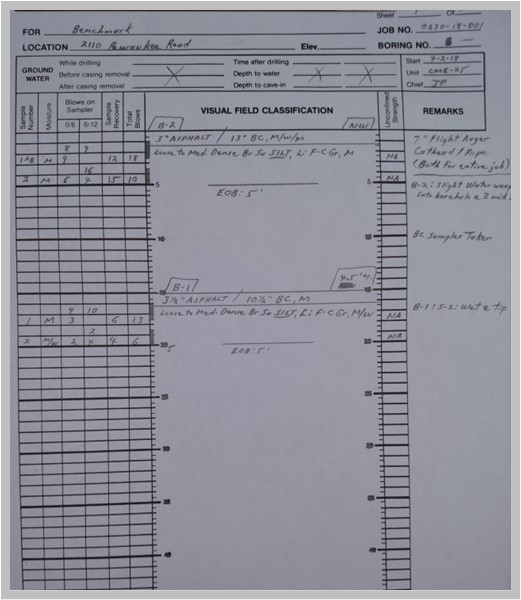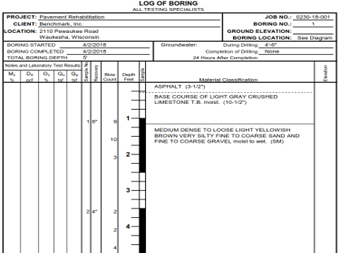What is the difference?
 By Daniel Wilson, PE
By Daniel Wilson, PE
Senior Consultant
The Benefits of Using Geotechnical Data While Preparing Design-Bid Documents for Your Next Pavement Rehabilitation Project
Geotechnical exploration is also known as soil analysis, soil testing, and subsurface investigation. Geotechnical exploration includes these essential parts: surface and subsurface exploration, soil and water sampling, soil and water testing, laboratory analysis, and reporting. Each piece explains how the soils will perform in different climates, different moisture conditions, and their ability to hold up to the loads on a particular site. The data can identify unacceptable or wet ground conditions so that remedies, if needed, can be planned and accounted for in the budget and design documents.
Performing geotechnical exploration can help avoid costly surprises during construction. In the photos below there is 10”+ concrete pavement beneath 2” of asphalt.
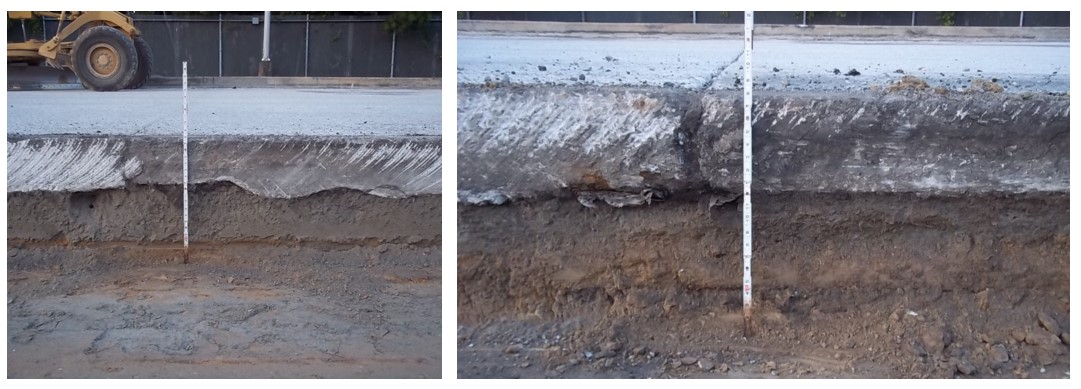
The concrete was paved over previously with an asphalt overlay. This resulted in a difference of almost $1M of construction replacement work.
In the example, a chemical (lime) stabilization was incorporated into the design because of the geotechnical exploration and known conditions.
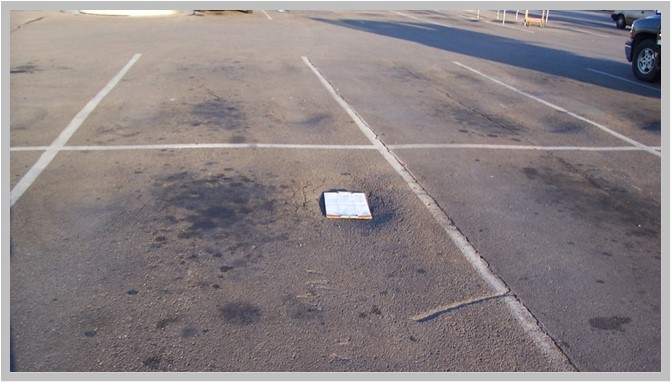
Parking Lot with Surface Deformation.
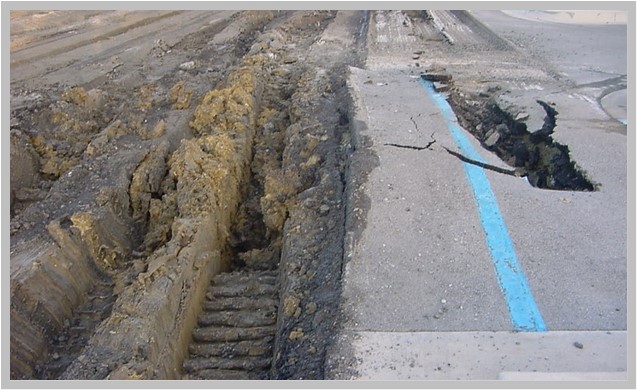
During construction, a photo showing pavement bridging over significant instability. If this was not caught during the design phase, it could have resulted in a considerable change order.
Geotechnical exploration should include tests in the laboratory and field. A typical series of tests for a pavement design consists of:
- Percent moisture content
- Atterberg Limits
- Sieve Analysis
- California Bearing Ratio (CBR)
- Standard Penetration Testing (STP)
Geotechnical exploration is one of the most important actions necessary for proper rehabilitation or new construction design. The theory and reasoning behind the full battery of tests is to gain knowledge of the existing pavement structure and underlying conditions at a particular site.
|
Sample Field Log
|
Sample Boring Log
|
Over the years, we have seen our fair share of underlying conditions that cause premature failures of the pavements, resulting in unplanned capital expenditures for our clients. There is much less risk of this happening when geotechnical exploration is performed during the design phase.

Pavement failure occurred in less than two years due to poor underlying substrate conditions and inadequate asphalt pavement thickness.
Geotechnical exploration varies in pricing due to several factors: location of the site to be tested, number of boring locations, concrete or asphalt pavement, depth of borings and the number of laboratory tests and samples. Other items that may affect pricing is the level of security at the site, safety training, and private utility marking if utility plans are not available.
In most cases, small sites with several shallow borings and laboratory tests can be in the range of a few thousand dollars. Larger sizes, such as processing plants or large retail centers, can be several thousand dollars. Based on the need for information and the visual observations during the initial site inspection, the consulting engineer will determine the location and frequency of the test areas. More borings may be recommended in a particular area due to failing pavement, subsurface water observation and deformation (heaving/settling) of the pavements. Typically, the cost of the geotechnical exploration can be less than 2%.
Sampling and Quantity Considerations:
- No “Rule of Thumb” or one size fits all approach
- Typically around one (1) sample per every 15,000 to 25,000 sq ft.
- Car parking lots would be about one (1) per every 30 to 50 cars.
Trying to save money by cutting back on geotechnical work is not a smart move. Deciding to perform geotechnical work and hiring an experienced consulting firm are two of the most necessary assurances of a successful pavement project, both short-term and long-term. The data from these reports will ensure you have a proper pavement design with a sufficient structural number to maintain a pavement for many years.
Conversely, you do not want to over-design a pavements cross-section as a safety measure by not having the geotechnical data available, thereby not properly utilizing your construction budget.
If you have had geotechnical work performed at your facility in the past, be sure to keep that data for use in the future. While pavement thicknesses vary on a site when replacements or overlays are installed, overall ground conditions and soil types will not change a great degree from year to year.
The cost of performing a soil investigation during the preliminary design stage is offset by reducing or eliminating the site unknowns. However, proceeding with designs and construction without all the valuable data may lead to over or under-designed pavements and possible cost overruns if unacceptable soil conditions are discovered.
Making informed decisions on pavement rehabilitation scoping can save money in both the short and long-term.

